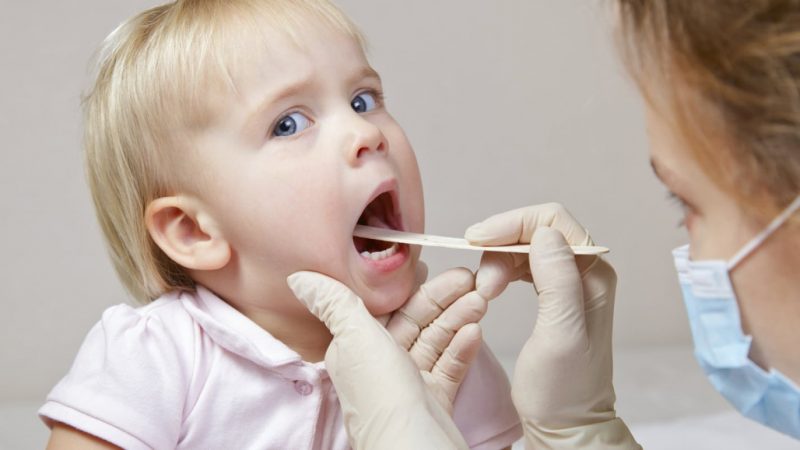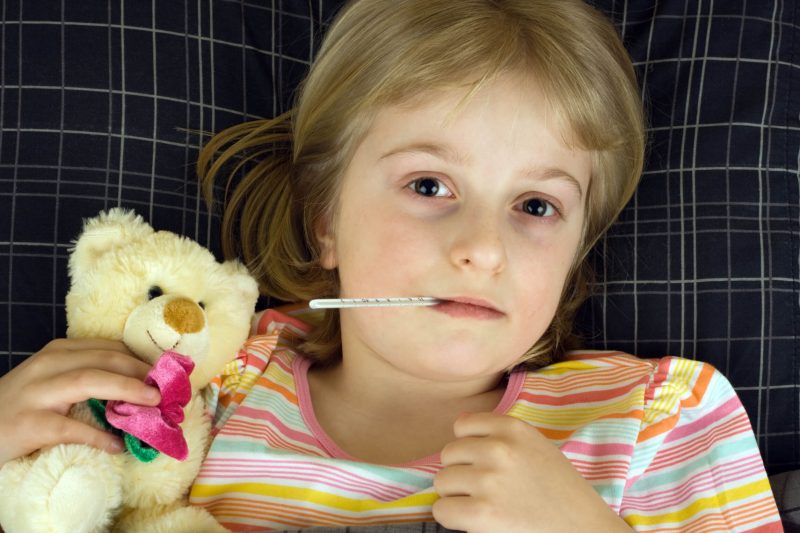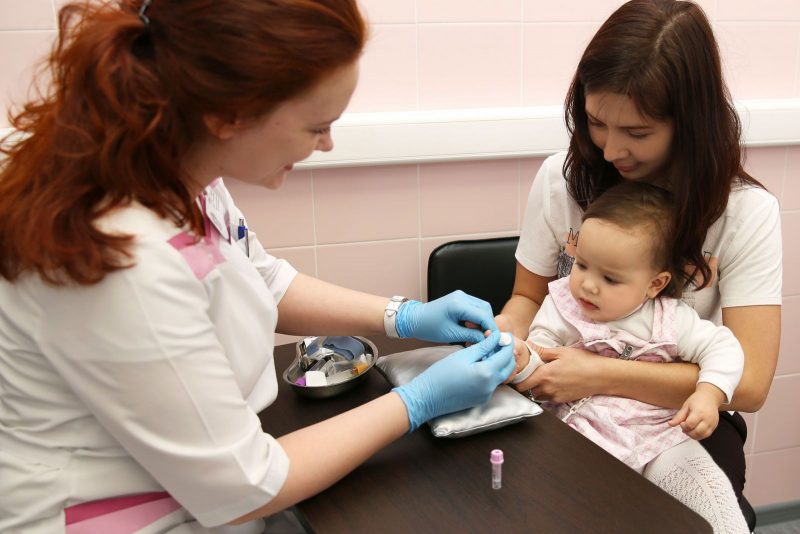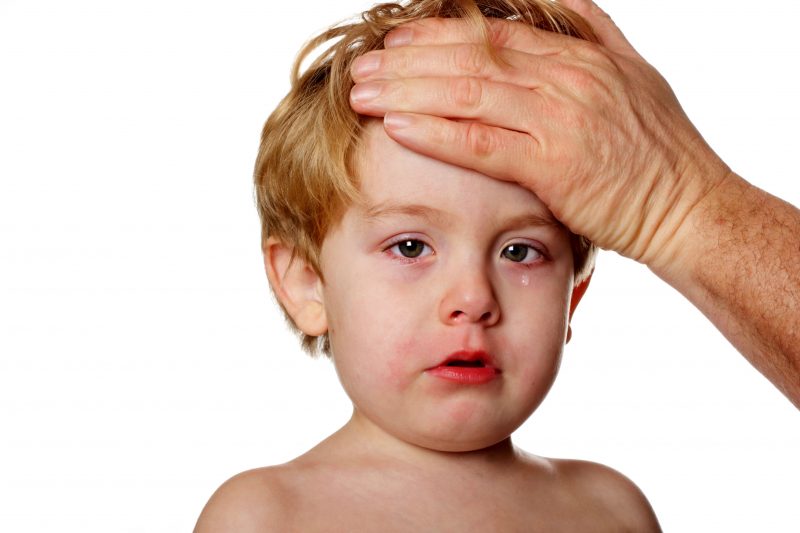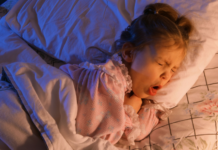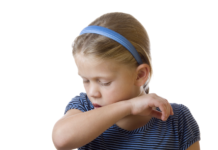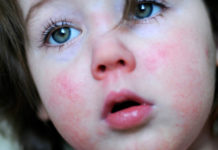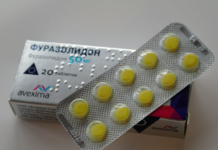A disease called mononucleosis is an acute respiratory disease that children and adolescents are most likely to have. This pathology requires timely diagnosis and therapy. What are the typical symptoms and treatment of mononucleosis in children?
Material Content:
Forms of mononucleosis in children
The disease under discussion is usually distinguished in forms, depending on many factors. So, infectious mononucleosis is chronic and acute, typical and atypical. Typical is divided into mild, moderate and severe forms, atypical may differ in the erased symptoms and even be asymptomatic. Sometimes only signs of disease of the internal organs can indicate its presence.
By the presence or absence of complications, mononucleosis is complicated and uncomplicated.
Mononucleosis infection routes
Mononucleosis is transmitted by airborne droplets and by contact. In addition, a hemolytic mode of transmission (from mother to newborn, from donor to recipient) is characteristic of this pathology.
Mononucleosis virus is unstable to manifestations of the external environment. When disinfected or exposed to sunlight, it dies.
Symptoms and signs in children
The incubation period of the disease lasts from a week to three. The onset of pathology is acute or gradual.
The acute onset of mononucleosis is marked by hyperthermia (38 - 39 ° C), chills and fever, headache, muscle aches, sweating, sore throat when swallowing.The fever can last about a month, sometimes even more, and at the same time be accompanied by jumps in temperature indicators.
Mononucleosis can be recognized by additional symptoms:
- Swelling of the lymph nodes without pain when pressed at an early stage. In the absence of the necessary therapy, a developing disease can make the lymph nodes painful and increase their number.
- Signs typical of a sore throat: redness and granular structure of the nasopharynx;
- Nausea, diarrhea.
- An increase in the liver and spleen in volumes.
- Sleep disturbances.
- Characteristic rash.
- Dizziness.
A rash with mononucleosis in children is provoked by an inflammatory process of the intestine and manifests itself on 3-5 days from the onset of the development of the disease. The spots can have a different color: from pale pink to burgundy. In summer, rashes are localized in one zone and spread throughout the body. These symptoms require specific treatment and care. After a few days, the rash goes away. Often, itching is absent in these areas, and its presence may indicate the onset of an allergy.
Note. Mononucleosis is able to be accompanied by the parallel development of polyadenitis, tonsillitis, bronchitis, tracheitis, jaundice. In this case, the patient has symptoms typical of these diseases.
What diseases can be confused with mononucleosis
Often, the diagnosis of mononucleosis is difficult, because the symptoms vary in age of the patient, the form of the disease, the absence or presence of concomitant pathologies. For this reason, the initial diagnosis is sometimes erroneous.
Mononucleosis requires differentiation with acute respiratory viral infections, tonsillitis, rubella and diphtheria, HIV, viral hepatitis, tularemia, Botkin's disease.
Read also:treatment of sore throat in adults
Diagnostic measures
In view of the difficult visual diagnosis of mononucleosis is confirmed by the following types of studies:
- general blood test (monitoring the concentration of red blood cells and white blood cells, ESR);
- biochemical blood test (mononuclear tracking).
In some cases, the patient is recommended by ultrasound of the liver, spleen in order to determine the state of these organs.
Treatment of infectious and viral diseases in children
Light and moderate forms of mononucleosis allow treatment of the patient at home. Severe form requires indispensable hospitalization.
Recommendations for the treatment of diseases are typical:
- diet number 5;
- gargling;
- bed rest and minimal physical activity;
- plentiful drink.
It is permissible to treat mononucleosis with medication or alternative means.
Drug therapy
Drug therapy of mononucleosis consists in taking the following drugs:
- Antibiotics. They are used only in case of attachment to a mononucleosis of a secondary infection. If the latter is absent, the treatment involves taking only an antiviral drug. The following antibiotics are recommended to eliminate the symptoms of mononucleosis: Ceftriaxone, Cefazolin, Azithromycin, Fromilide, Macropen, etc. Attention. With mononucleosis, it is strictly forbidden to use the penicillin series of antibiotics (ampicillin, amoxicillin, etc.).
- Antipyretic and analgesics - Acetaminophen, Ibuprofen.
- Antihistamines - Prednisone, Suprastin, Tsetrin, Loratadin.
- Antiseptics. Antiseptic drugs are used locally to rinse or spray the throat: Tantum Verde, Strepsils, Miramistin.
- Immunomodulators: Viferon, Tsitovir, Isoprinosine.
- Liver support: Karsil, Essentiale.
The choice of a certain type of therapy should be approximately agreed upon by the attending physician.
Folk remedies
In addition to drug therapy in the treatment of mononucleosis, there will be recipes for alternative medicine.
The most popular means of this kind include:
- Fresh cabbage. It is useful to use it freshly ground and in the form of a decoction combined with honey and lemon.It is prepared as follows: put a few cabbage leaves in a pan and pour until completely covered with water. Boil over low heat for 5 minutes. Leave to cool completely, take several times a day.
- Astragalus. It has a strong antiviral effect, prevents the occurrence of post-painful complications. To prepare the broth, it is necessary to take dry crushed astragalus root in an amount of 6 g and pour it with a glass of boiling water. After standing the mixture in a water bath for 20 minutes, it should be set aside for an hour, then strain and take twice a day before meals.
- Echinacea. Tea made from the root of this plant has a strong antimicrobial and antiviral effect. To prepare it, you need 1 tsp. dry root of Echinacea, poured 0.5 liters of boiling water. The liquid is infused for 45 minutes, after which it is taken one glass three times a day.
- Melissa. Helps to effectively deal with the symptoms of viral mononucleosis in children. To prepare a healing drink, pour a pinch of lemon balm with a glass of boiling water. After 15 minutes, the fluid is expressed and taken twice a day. It is permissible to add honey to the drink.
- Coconut Oil Edible oil is taken orally by 1 tbsp. l up to 5 times a day. Such a procedure relieves pain in the throat and removes toxins from the body.
Diet for mononucleosis
Children with mononucleosis, as well as patients who are recovering, need to adhere to a certain diet. This is especially true for cases when the liver was affected.
Adhering to a diet for infectious mononucleosis in children is necessary taking into account some recommendations:
- Food should be easily digestible, balanced. You should limit the use of animal fats, spices, seasonings, sweets.
- The menu should include semi-liquid cereals and liquid soups, as well as lean meat, poultry, fish. Dishes are best boiled, baked or steamed.
- Also, a diet for mononucleosis in children involves observing a drinking regimen corresponding to the age of a small patient.
After infectious mononucleosis, the diet should be kept for 3 to 6 months, based on the severity of the disease. After this period, it is permissible to diversify the menu.
Forecast and consequences
For the most part, the prognosis for recovery from mononucleosis is favorable.
However, the lack of treatment, incorrect diagnosis, non-compliance with the recommendations of a specialist can cause various complications and negative consequences:
- The development of lymphomas - oncological formations of the lymphatic system.
- Asphyxia. Severe swelling of the tonsils is able to block the airways.
- Rupture of the spleen. In some cases, the organ grows so much that its outer shell does not stand up, and rupture occurs. A similar condition can be accompanied by severe internal bleeding. Without surgery, the life of a small patient may be at risk.
- Angina. It develops in some children who have undergone mononucleosis.
- Pathology of the nervous system. These are dangerous diseases: encephalitis, ataxia, and meningitis.
Within six months after recovery, young patients may experience increased fatigue, a desire often and for a long rest. Any vaccination, as well as psychoemotional or physical exertion, is prohibited at this time.
Children who have undergone mononucleosis should be monitored by an infectious disease specialist for a year. In some cases, it is necessary to systematically be shown to the ENT specialist, immunologist or other specialists.
Prevention
The basic preventive principles for the prevention of mononucleosis are the general strengthening of the body's defenses:
- systematic sports;
- hardening;
- compliance with the regime of the day and nutrition;
- alternating rest with loads;
- intake of vitamins;
- reduction in the amount of emotional stress and stress.
Having identified the typical symptoms of mononucleosis and learning what kind of disease it is, parents can take all possible measures to protect the child from the causative agents of this pathology. To do this, timely show children to the pediatrician and specialist specialists. Such visits will help to identify the existing deviations and impaired functionality of internal organs and systems. Thus, the risk of developing the consequences and complications of almost all diseases, including mononucleosis, is significantly reduced.


